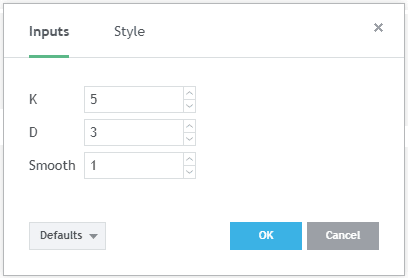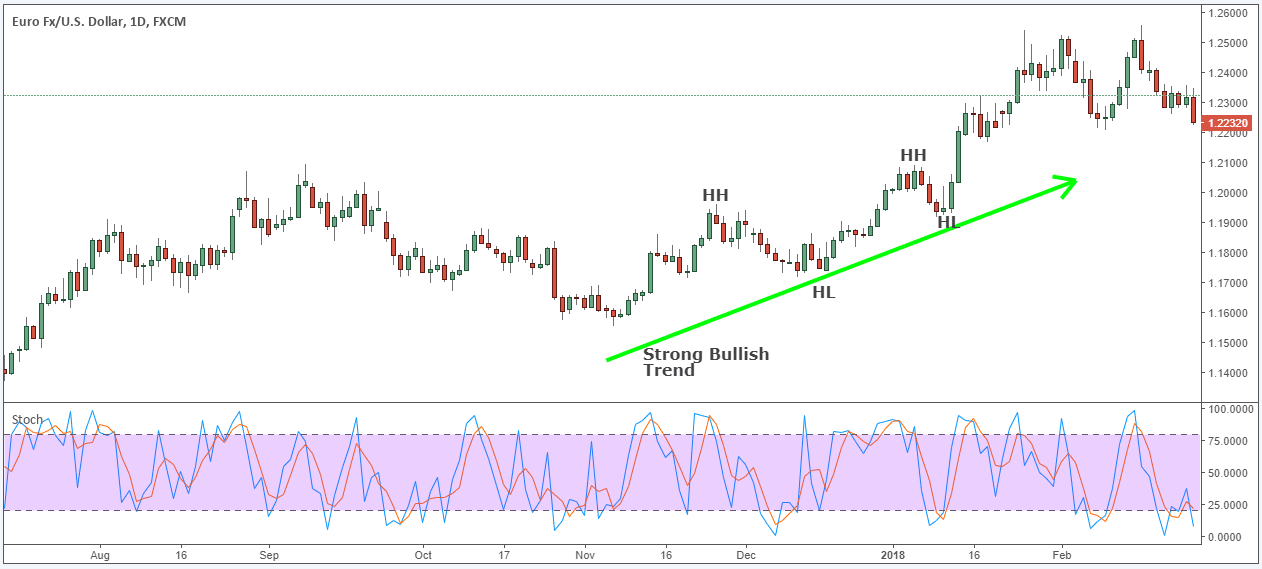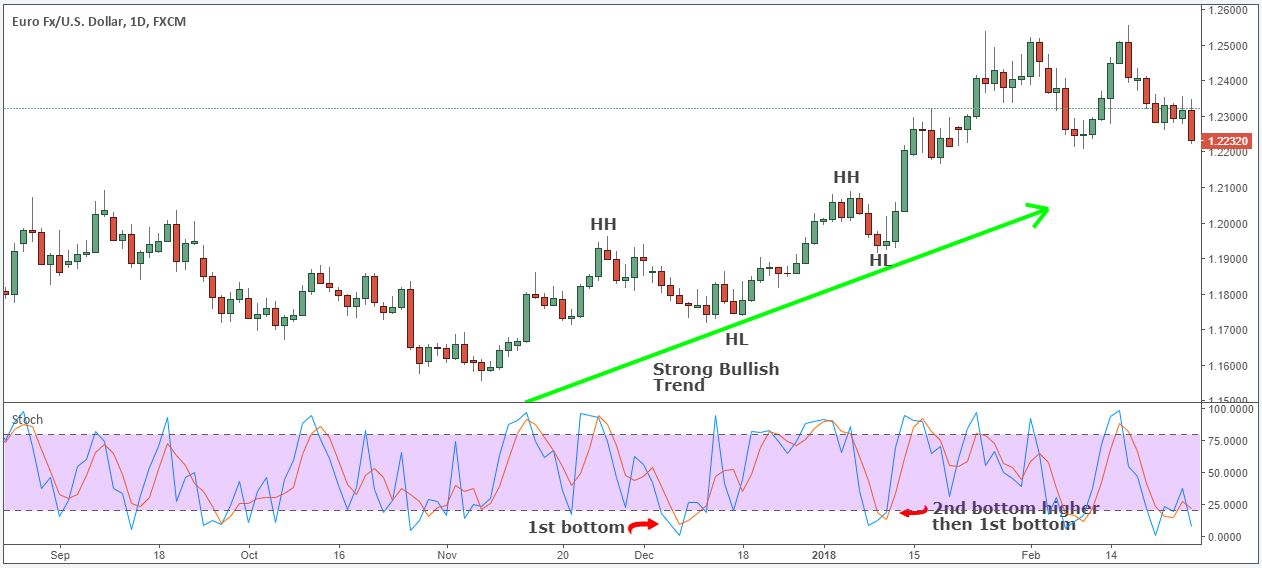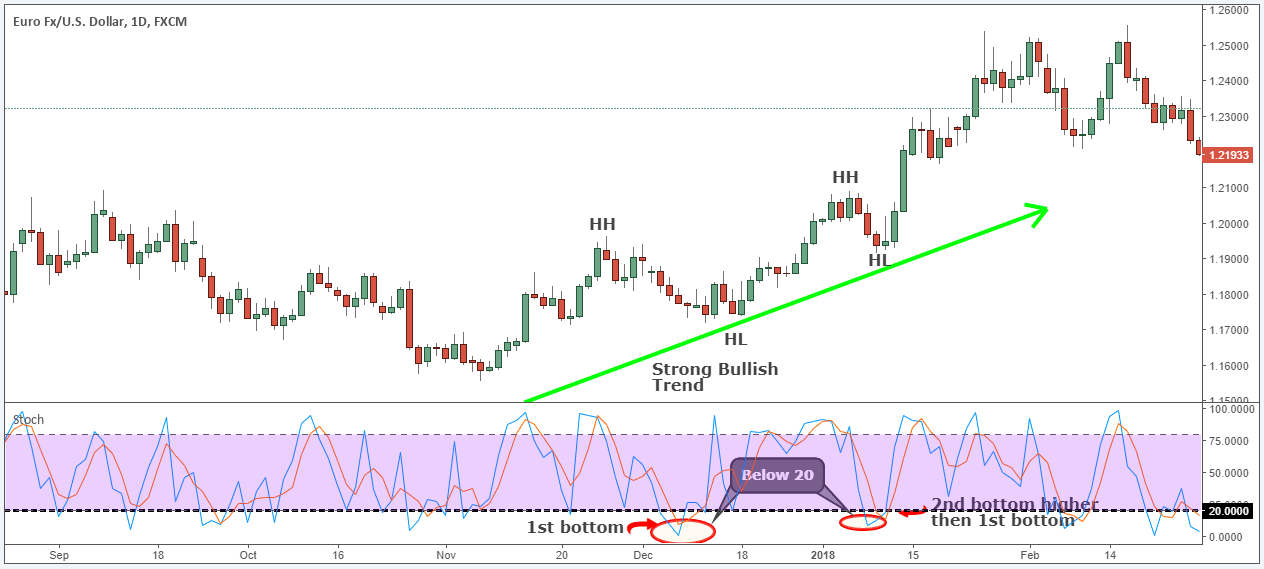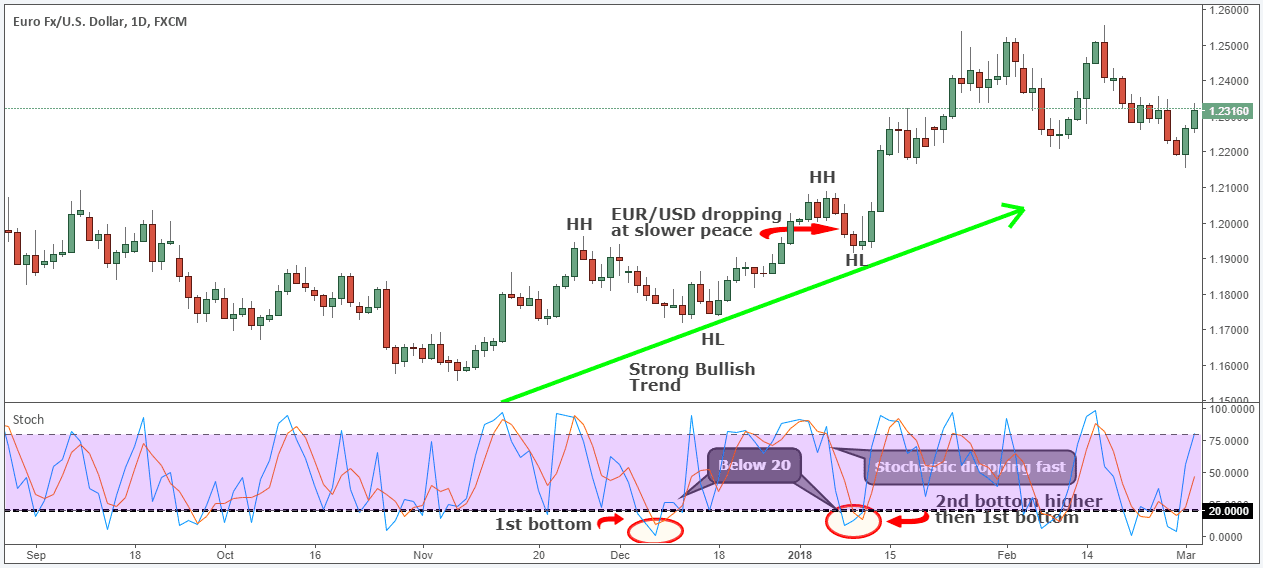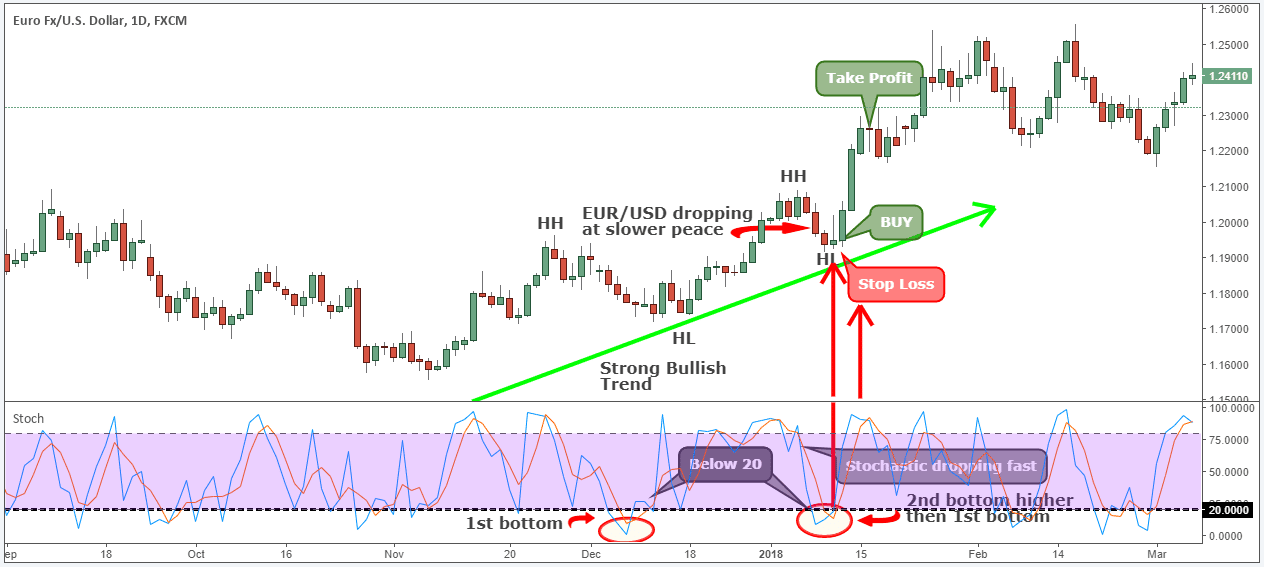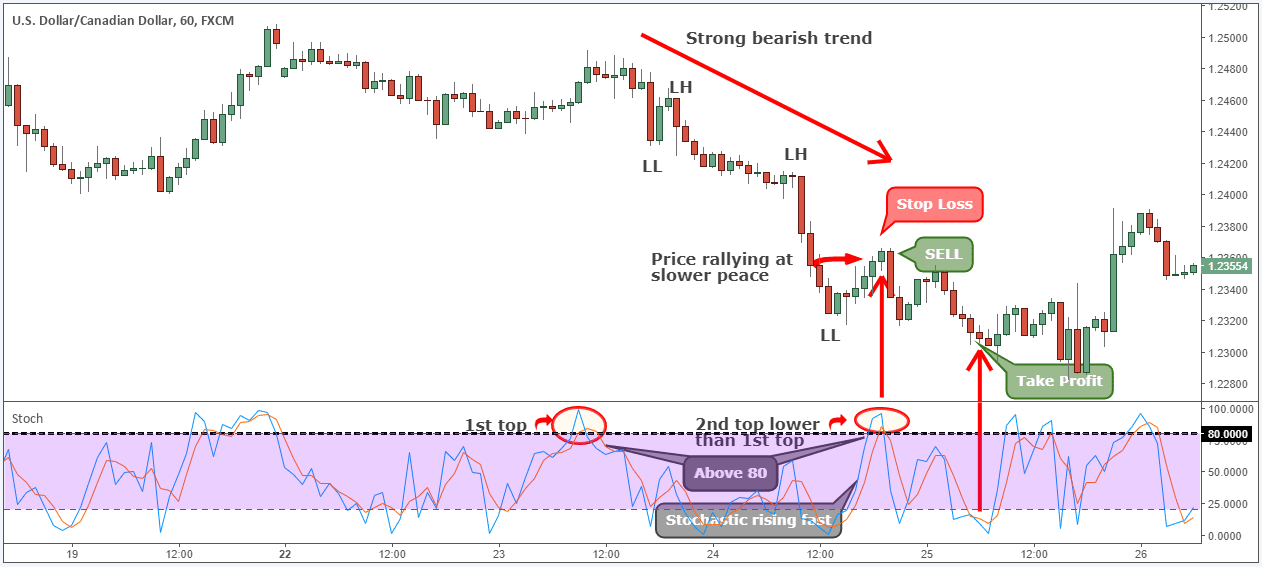The Stairs Trading Strategy – 6 Stepping Stones to Trading Profitably

Stairs Trading Strategy – 6 Steps to Trading Profitably
This trading tutorial is all about using the stairs trading strategy. Here you’ll learn the 6 steps you need to trade profitably using the stairs trading strategy. There are many steps to trading profitably. The first thing you have to do when you decide to trade is to determine where to enter the market. For that, you need an entry strategy that will pinpoint accurate trading levels that will generate a good risk to reward ratio.
Last time we outlined an exit strategy used by professional traders, and we’ve got numerous emails asking us to reveal other trading secrets from the institutional world.
Our team at Trading Strategy Guides has decided to reveal one more trading secret, and it will show you another way to use the stochastic indicator.
Your day trading entry is important both mentally and financially. It’s important to develop the necessary patience to wait for the right entry and go into a trade with a well-thought trading plan. It’s true that your entries only make up a tiny percentage of your trading system but the fact remains that you still need a viable entry point.
The stair trading strategy is a trade entry method that uses particular settings for the stochastic indicator.
We’re going to take the simple stochastic indicator and create an amazing trading tool to measure pullbacks or retracements. The stair trading strategy will require making some slight modifications to the stochastic default settings.
As you may guess by now, the only indicator you need to trade successfully this entry method is the stochastic indicator.
The stochastic indicator was developed by George Lane more than 50 years ago. The reason why the stochastic indicator survived for so many years is because of the popularity of this indicator and also because it continues to show consistent signals even in these current times. Also, read the way bankers trade in the Forex market.
The Stochastic indicator looks like this:
The Stochastic indicator is a momentum indicator that shows you how strong or weak the current trend is. It helps you identify overbought and oversold market conditions within a trend. The stochastic indicator should be easily located on most trading platforms.
Let me quickly tell you how to use the stochastic indicator and how to interpret the information given by this fantastic indicator so you can know what you’re trading.
When the stochastic moving averages are above the 80 line, we’re in the overbought territory; conversely, when the stochastic moving averages are below the 20 line, we’re in oversold territory.
Please have a look at the chart example below to see how to use the stochastic indicator.
The default settings for the stochastic indicator are 14, 3, and 1.
As we’ve explained earlier, we need to change the stochastic default setting from 14 bars to 5 bars for the slow-moving average and leave the fast-moving average unchanged at 3.
The new settings are required if you want to make the stochastic indicator more sensible to the short-term market swings in price. Basically, we’ve created the best technical indicator for short-term trading.
Now, let’s don’t waste any more time and jump straight into this retracement strategy and how to trade stair strategy will be outlined next.
How to Trade Using the Stairs Trading Strategy
If you don’t want to trade on pure randomness, you need a trade trigger before opening an order. When the price reaches your level of interest, you need some type of confirmation.
This is where our entry technique can be applied across all types of trading strategies.
Now, before we go any further, we always recommend taking a piece of paper and a pen and note down the rules of this entry method.
For this article, we’re going to look at the buy side.
Step #1: Identify a strong trading market that has a clear bullish trend.
The first step is to identify a strong trading market that has a clear bullish trend.
The Stepping Stones strategy seeks to take advantage of the market trend, and it can be considered as another pullback trading strategy. This is the same as our previous strategy, the Four Candle Hammer Strategy.
If you need some basic Forex tips on how to identify a trend or what counts as a strong trading market, you can review our trading strategies library or simply read our Trend following strategy.
Our team at Trading Strategy Guides has discovered that you can benefit more by using the stochastic indicator to trade pullbacks rather than trying to pick a falling knife or to jump in front of a train.
Consequently, you want to find a strong trading market like the one highlighted in the EUR/USD chart.
Now let’s see how the professional Forex traders make use of the stochastic indicator.
See below:
Step #2: The Stochastic indicator needs to develop a double bottom pattern. The second bottom has to be higher than the first bottom.
It’s critical to make the difference between the double bottom price pattern and the fact that we’re looking at the stochastic indicator to develop a double bottom.
The other condition is that we need the second stochastic swing low to be higher than the first bottom.
Once these two conditions are satisfied, we still need one more caveat to be fulfilled which brings us to the next rule of how to trade stair strategy.
See below:
Step #3: Both stochastic swing lows need to be in oversold territory below the 20 level
A stochastic reading below the 20 level suggests that the market is oversold and there is a high chance of reversal.
Many times a market can remain in oversold or overbought territory longer than you can remain solvent. This is why we have put other trading rules in place so we can avoid this situation.
Now it’s time to switch our focus to the actual price and see the relationship between the stochastic indicator and the price action that needs to be satisfied.
See below:
Step #4: Look for divergence to develop between the stochastic indicator and the market price.
Before we go any further than this, we need to clarify one thing.
The way people trade divergence is by using a variety of momentum-based indicators and measure or compare when the momentum indicator and the price diverge.
Make sure to check out our step-by-step guide on a chart pattern strategy!
In other words, when the price makes a lower low but the momentum indicator fails to make a lower low and instead makes a higher low, then we have a situation where we have divergence. Read more about convergence and divergence here.
So, what type of divergence we want to see?
In plain English, we look for the price not to drop that much compared with the stochastic indicator. Notice how the stochastic indicator is falling very fast into oversold territory, but the EUR/USD exchange rate is dropping at a much slower pace.
This is the type of divergence we want to see:
Note* the stronger the divergence between the stochastic indicator and the price the better the buy signal can be.
The next step will highlight the trigger for our entry order.
See below:
Step #5: Buy after the second bottom develops a stochastic crossover
The trigger for our entry is quite simple.
Once the second bottom produces a stochastic crossover, we jump straight into the market and start buying so we won’t miss a great entry opportunity. In this scenario, our entry is as close as possible to the endpoint of the retracement.
You really can use any type of exit strategy as you wish.
Now, of course, this is just an entry technique but, we want to go one step forward and outline some strategies to protect your capital and at the same time to maximize your profits.
Step #6: Place the protective stop loss below the last swing low. Take Profit when the slow stochastic moving average enters in overbought territory above 80 levels.
Place your protective stop loss 10 pips below the last swing low. We’re adding a buffer of 10 pips to protect ourselves in case of any false breakouts.
Usually, our stop will be very close to our entry price which is the reason why this swing trading strategy is such a great entry technique to keep your losses small.
Where to take profit is also quite intuitive using the stair-step chart pattern.
Once the stochastic slow-moving averages enter overbought territory or when it touches the 80 level, we want to cash out. Alternatively, if you’re going to try to stay longer in the trend you can try our 10-day breakout strategy.
Note** the above was an example of a BUY trade using the stepping stones strategy. Use the same rules for a SELL trade – but in reverse. In the figure below, you can see an actual SELL trade example.
Conclusion – Stair Trading Strategy
When trading it’s important to have accurate entries as it’s important to have accurate exits. It’s desirable to improve your entries as this is one of the steps to trading profitably. Another advantage of the stepping stones strategy is that it will not let your emotions take over your decision-making process.
Don’t forget, if you want to trade objectively you’ll need a trigger. Otherwise, emotions will run your trading decisions and you won’t be able to successfully trade the markets. Our simple swing trading strategy will help you keep your emotions under control.
Thank you for reading!
Please leave a comment below if you have any questions about The Stepping Stones Strategy!
Also, please give this strategy a 5 star if you enjoyed it!
[ratings]




